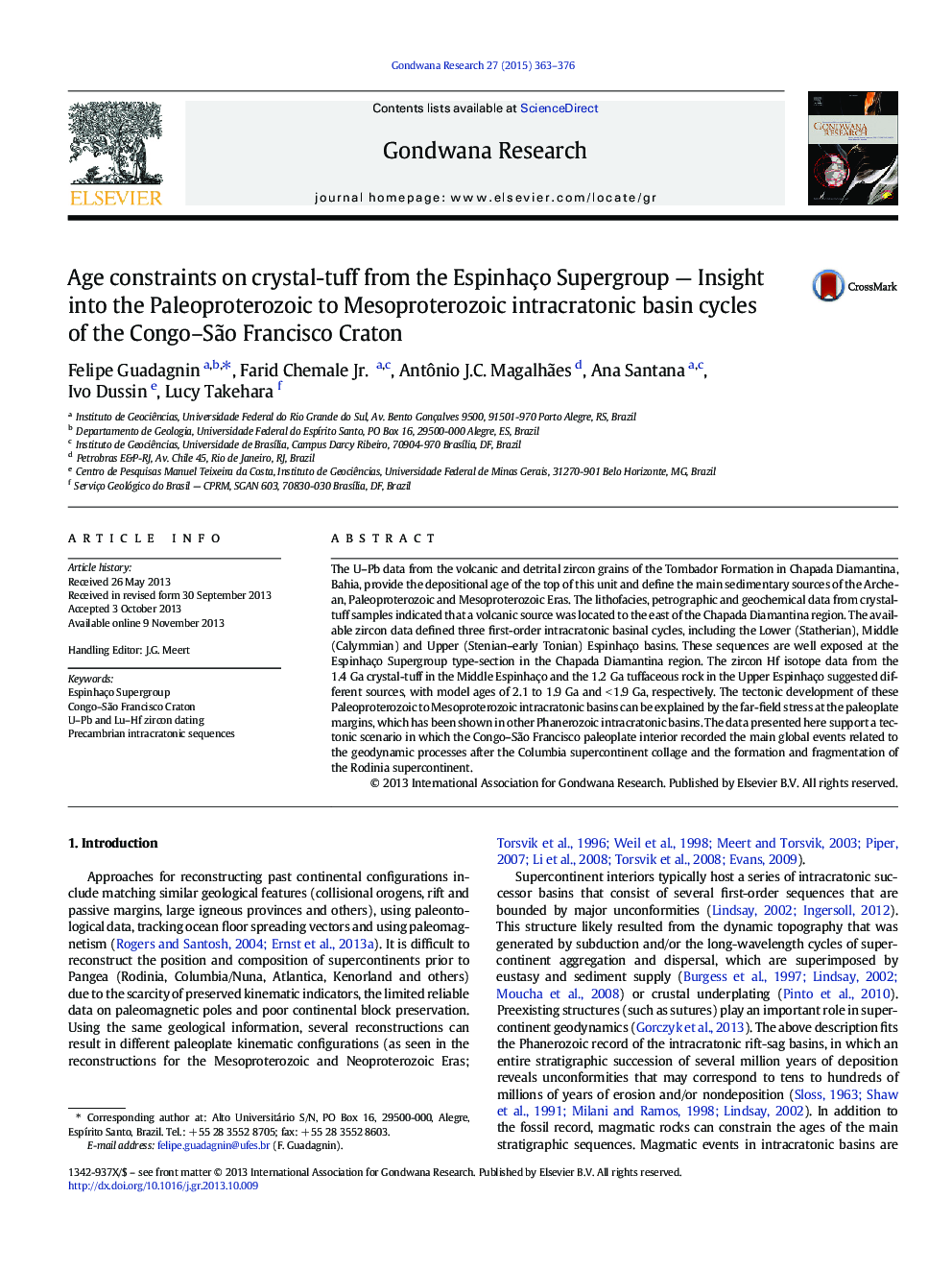| Article ID | Journal | Published Year | Pages | File Type |
|---|---|---|---|---|
| 4727192 | Gondwana Research | 2015 | 14 Pages |
•1.4 Ga volcanic activity in the Middle Espinhaço Basin•U–Pb and Lu–Hf zircon data suggest different sources for sediments and tuffs•Characterized three intracratonic basin cycles in the Congo–São Francisco Craton
The U–Pb data from the volcanic and detrital zircon grains of the Tombador Formation in Chapada Diamantina, Bahia, provide the depositional age of the top of this unit and define the main sedimentary sources of the Archean, Paleoproterozoic and Mesoproterozoic Eras. The lithofacies, petrographic and geochemical data from crystal-tuff samples indicated that a volcanic source was located to the east of the Chapada Diamantina region. The available zircon data defined three first-order intracratonic basinal cycles, including the Lower (Statherian), Middle (Calymmian) and Upper (Stenian–early Tonian) Espinhaço basins. These sequences are well exposed at the Espinhaço Supergroup type-section in the Chapada Diamantina region. The zircon Hf isotope data from the 1.4 Ga crystal-tuff in the Middle Espinhaço and the 1.2 Ga tuffaceous rock in the Upper Espinhaço suggested different sources, with model ages of 2.1 to 1.9 Ga and < 1.9 Ga, respectively. The tectonic development of these Paleoproterozoic to Mesoproterozoic intracratonic basins can be explained by the far-field stress at the paleoplate margins, which has been shown in other Phanerozoic intracratonic basins. The data presented here support a tectonic scenario in which the Congo–São Francisco paleoplate interior recorded the main global events related to the geodynamic processes after the Columbia supercontinent collage and the formation and fragmentation of the Rodinia supercontinent.
Graphical abstractFigure optionsDownload full-size imageDownload as PowerPoint slide
